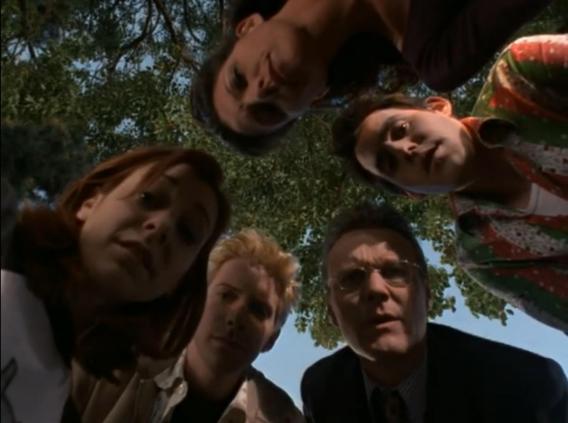Gateway Episodes: Buffy the Vampire Slayer

Hulu.
Summer is right around the corner, and it’s the perfect time to catch up with a few of those shows everyone is always saying you should watch. But there are so many! How can you decide which to try? Pilot episodes have so much introductory work to do; they’re usually subpar compared with the great stuff to come. And the very best episodes of a series often demand too much knowledge of what came before.
You need to find the gateway episode, one you can watch without any background knowledge and which will give you a real sense of the show—and whether you’ll like it. In this new weekly Brow Beat series, we’ll be directing you to the best gateway episodes for great series you should watch this summer.

UPN.
Buffy the Vampire Slayer boosters use the term “Buffyverse” to refer to the fictional world in which the show takes place. It’s an apt term: The show’s reality is a universe unto itself, built on detailed origin stories and mythologies that explain the coexistence of human beings, vampires, and other demons, and the presence of, for instance, hell dimensions.
While the minutiae of the Buffyverse lends itself to scholarly inquiry and fanfic, it can also discourage the Buffy uninitiated. The many layers of backstory regarding, say, werewolf husbandry and the balance of magic in the universe can make for an almost impenetrably dense TV reality.
But some of Buffy’s most lauded episodes are one-offs, episodes that even a first-time viewer—even a sci-fi/fantasy skeptic and Buffy eye-roller—can enjoy without any introduction. These standalone episodes were sprinkled throughout the series, and because they tell stories that are mostly unrelated to each season’s overarching plotline, they require little in the way of familiarity or buy-in. And they still invite the viewer into a world rendered with such close attention to its own conventions that it feels not just realistic, but real.
So if you’re a late-comer to Buffy, and want to know whether you’ll actually enjoy the show, which of these standalones should you give a shot? Start with “Earshot,” the 18th episode of Season 3. Seasons 1 and 2 of Buffy relied a bit much on excessively campy bad guys—fish monsters, a ventriloquist’s dummy, a giant man-eating insect, a robot—who served as narrative crutches clumsily telegraphing real-world evil. The bad guys of Season 3, on the other hand, embody villains we all know: adolescent alienation, romantic jealousy, teenage insecurity, high school frenemies, parents who just don’t understand.
“Earshot” explores the loneliness of being (or, rather, feeling) different, one of the show’s recurring themes. In it, Buffy is inadvertently imbued with the ability to hear the thoughts of others. She hopes to use the power to gain advantage in battle, achieve academic success, and draw her best friends closer to her. But the new omniscience makes her friends feel exposed and vulnerable. When they run from her, she is left alone, the voices of her classmates’ angst and pain a wall of noise inside her head.
Ultimately “Earshot” is about the dissonance between our inner lives and what we show the world—and the way we come to trust others without ever really knowing for sure their true intentions and motivations. The episode offers the best of Buffy: human themes explored by way of superhuman phenomena and a skillful latticing of playful comedy with suspenseful misdirection, and moments of heart and vulnerability. If you don’t like the episode, move on to another series. But if you do, there’s hours more brilliance where that came from.
